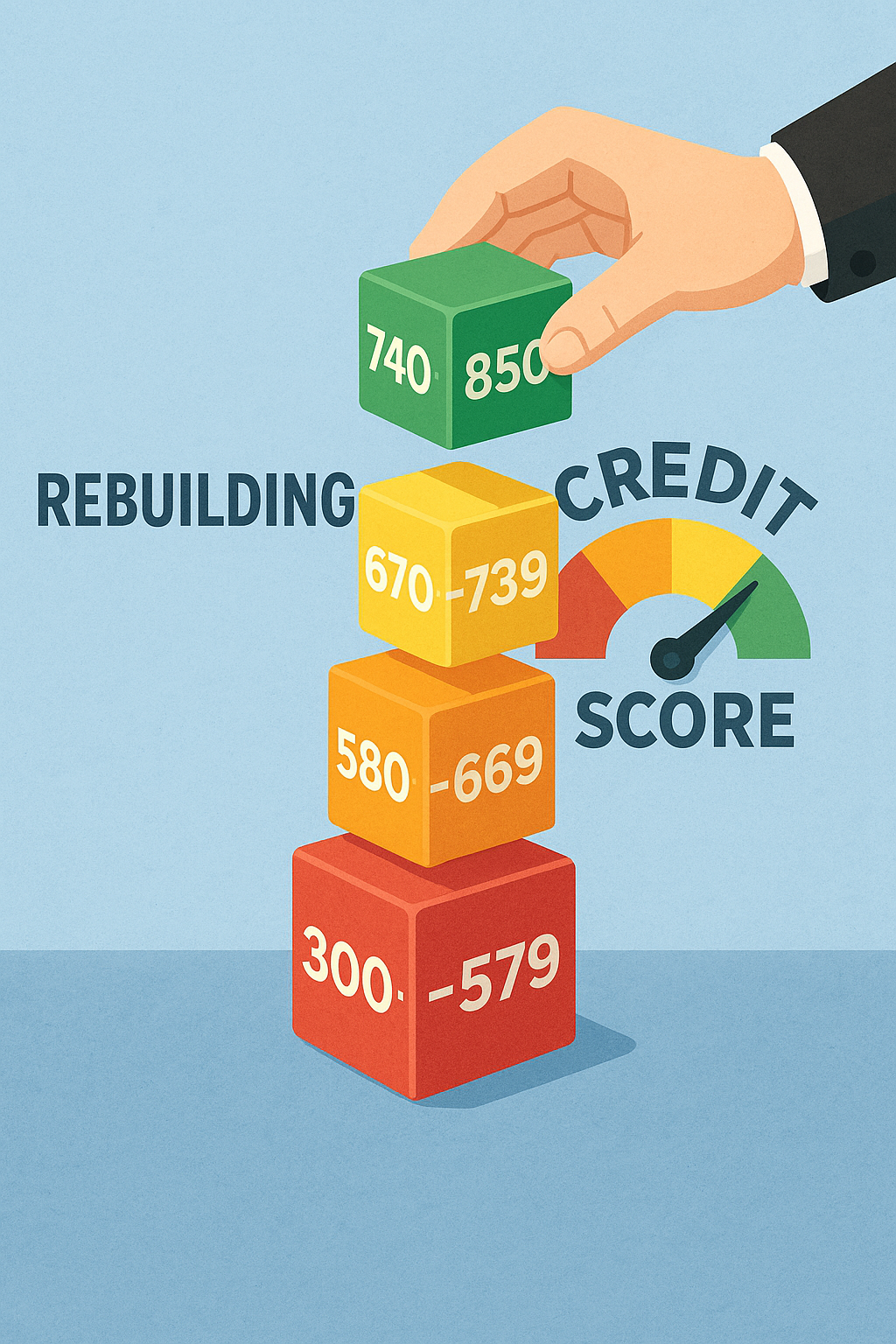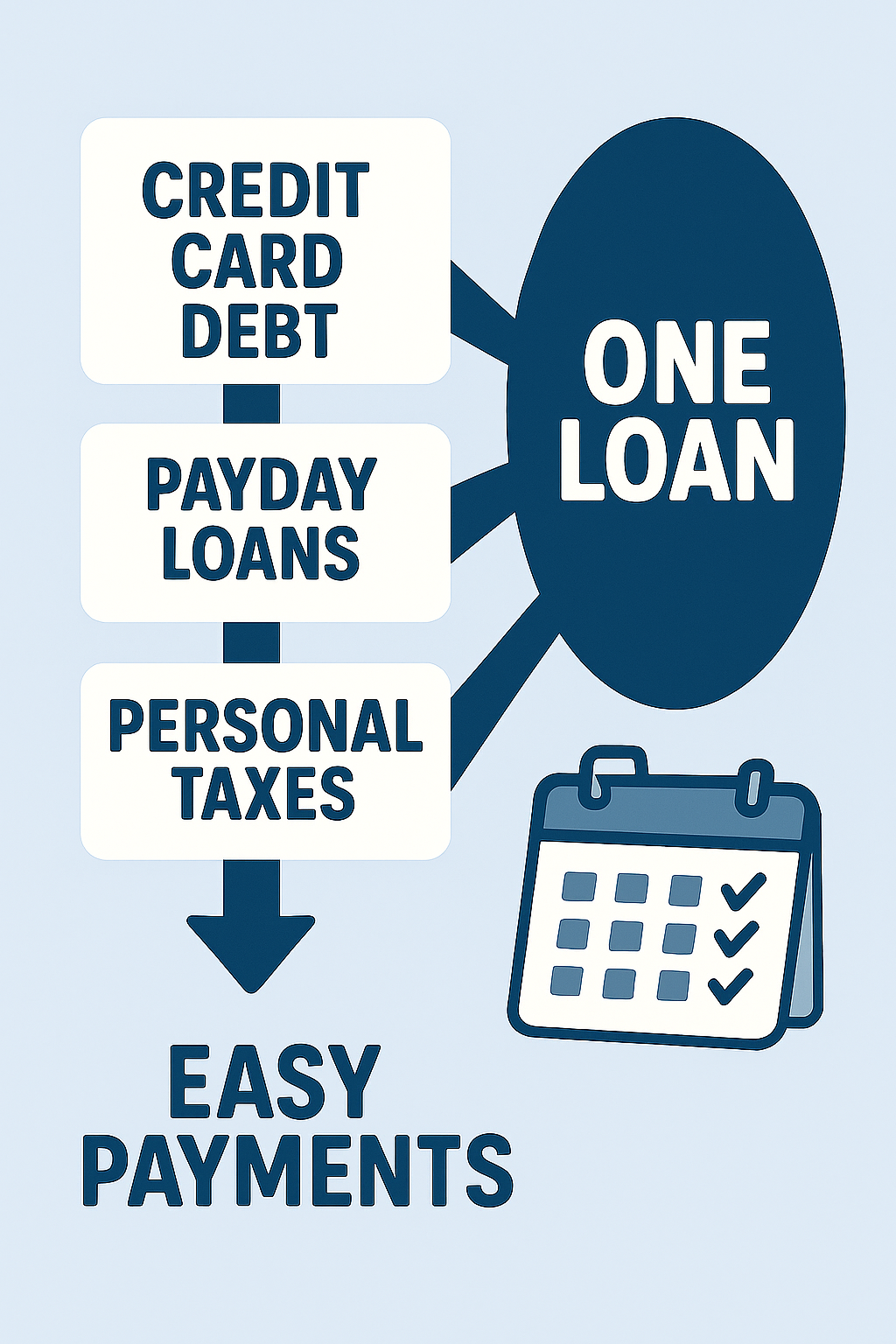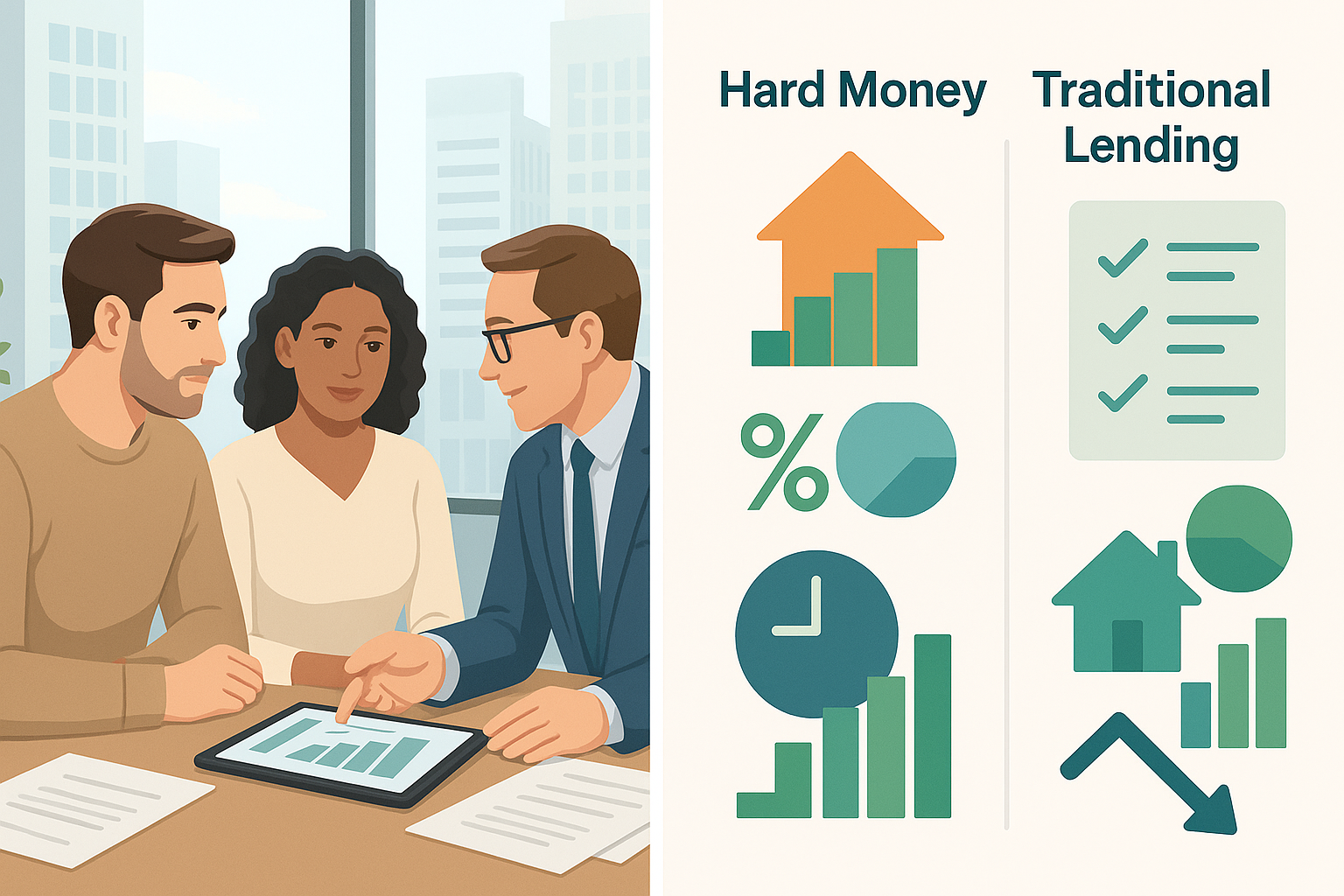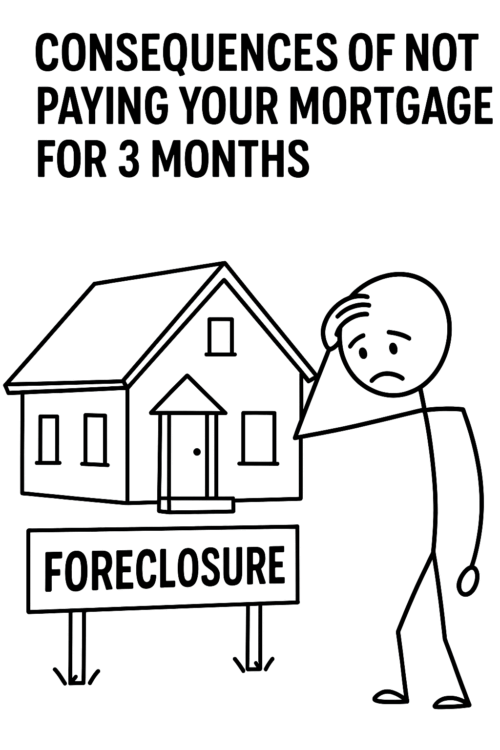Top 15 Financial Tools to Help Rebuild Your Credit as a Homeowner in Canada
Learn how Canadian homeowners can rebuild credit using proven financial tools like secured credit cards, credit-builder loans, budgeting apps, and equity strategies.
Owning a home in Canada is a major milestone, but for many homeowners, maintaining good credit is an ongoing challenge. Missed payments, high balances, or life events like job loss can drag your credit score down. The good news? You already have a powerful advantage: homeownership itself.
With the right financial tools and strategies, you can rebuild your credit, regain lender confidence, and even qualify for better mortgage rates in the future. This guide breaks down practical, Canadian-specific ways to strengthen your credit while protecting your biggest investment — your home.
Table of Contents
Toggle1. Why Credit Matters for Homeowners
Your credit score doesn’t just determine if you can get a loan — it directly affects your mortgage rate, home equity options, and refinancing opportunities.
A few points difference in your credit score can translate into thousands of dollars saved or lost over the life of your mortgage.
In Canada, credit scores range from 300 to 900, and lenders typically consider:
| Score Range | Rating | Meaning |
|---|---|---|
| 760–900 | Excellent | Best mortgage and loan rates |
| 725–759 | Good | Generally approved, decent rates |
| 660–724 | Fair | Some lenders approve, with higher rates |
| 560–659 | Poor | Limited options, higher interest |
| Below 560 | Very Poor | Difficult to qualify without alternative lenders |
If your credit has dipped into the lower tiers, don’t panic — rebuilding is entirely possible, especially when you use your home and finances strategically.
2. Check Your Credit Report Regularly
Before you can rebuild, you need to understand where you stand.
In Canada, the two main credit bureaus are Equifax and TransUnion, and both allow you to request your credit report for free.
Tip: Order both reports — lenders don’t always report to both agencies.
What to look for:
-
Errors or duplicates: Dispute inaccurate late payments or closed accounts still showing open.
-
Credit utilization: Aim to keep revolving credit (like credit cards) under 30% of your limit.
-
Missed payments: Identify which accounts hurt your score most.
If you find an error, both Equifax and TransUnion have online dispute forms. Correcting mistakes can raise your score almost immediately.
3. Use a Secured Credit Card to Rebuild Credit
A secured credit card is one of the most effective tools for rebuilding credit in Canada.
Unlike a regular credit card, you make a deposit (often $300–$1,000), which becomes your credit limit.
Recommended options for Canadians:
-
A Secured Visa or Mastercard
These cards report your payment history to both major bureaus — helping establish a consistent record of on-time payments.
Best practices:
-
Always pay on time, ideally in full.
-
Keep your balance below 30% of the limit.
-
Don’t close the account after paying it off — credit length matters.
4. Consider a Credit-Builder Loan
A credit-builder loan works differently from a traditional loan.
You don’t get the money up front — instead, the lender holds the funds in a secured account while you make fixed payments. Once you have finished paying, the funds (plus some interest) are released to you, and your payment history is reported to credit bureaus.
5. Leverage Home Equity Responsibly
As a homeowner, your home equity — the value of your home minus what you owe — can be used strategically to consolidate high-interest debt or refinance at lower rates.
Smart equity tools include:
-
Home Equity Line of Credit (HELOC): Flexible borrowing based on your home’s value.
-
Mortgage refinance: Combine debts into one manageable payment, often with a lower rate.
-
Second mortgage: A short-term loan that can free up cash to clear credit cards or collections.
By paying off high-interest consumer debt using lower-interest home equity funds, you can immediately reduce your utilization ratio — a key factor in boosting credit scores.
Always work with a mortgage broker who understands your full credit picture. Misusing equity can create a cycle of debt that’s harder to escape.
6. Automate and Simplify Payments
A single missed payment can drop your credit score by 50 to 100 points, even if it’s an oversight.
To avoid that, use automation tools like:
-
Online banking auto-payments
-
Budgeting apps
-
Mortgage broker dashboards that notify you of due dates
Even small, consistent payments show lenders that you’re financially reliable.
If you struggle with multiple bills, consider setting up biweekly payments — they’re easier to manage and reduce the risk of missed deadlines.
7. Use Budgeting Apps and Financial Tracking Tools
Budgeting and tracking tools don’t directly report to credit bureaus, but they help you stay disciplined — which indirectly improves your credit.
These tools help homeowners balance mortgage payments, property taxes, and daily spending — a crucial step when rebuilding credit.
8. Consolidate Debt Through a Mortgage Refinance
If you’re juggling multiple high-interest debts (credit cards, lines of credit, personal loans), a debt consolidation refinance may be the smartest move.
How it helps:
-
Reduces overall interest costs.
-
Frees up monthly cash flow.
-
Converts revolving debt into structured, trackable payments.
-
Replaces unsecured debt with a secured, lower-risk loan.
Canadian lenders like MCAP, First National, and Home Trust offer flexible refinance products — and brokers like LendToday.ca can connect you with the best fit for your credit situation.
9. Consider a Secured Line of Credit
If you prefer flexibility, a secured line of credit backed by your home can also be an excellent rebuilding tool.
Interest rates are typically lower than credit cards, and timely payments help strengthen your credit file.
To maximize benefits:
-
Avoid carrying balances month-to-month.
-
Make at least the minimum payment — ideally more.
-
Don’t treat it as disposable income; treat it as a controlled financial tool.
10. Work With a Mortgage Broker Who Understands Credit Recovery
A knowledgeable mortgage broker can be a huge asset when rebuilding your credit. They can:
-
Access lenders who cater to credit-challenged borrowers.
-
Structure short-term private loans with exit strategies.
-
Create a 12- to 24-month plan to move you back to an A-lender (prime mortgage).
At LendToday.ca, we specialize in helping homeowners recover from financial setbacks — whether through B-lender solutions, second mortgages, or credit-rebuilding refinance plans.
11. Diversify Your Credit Mix (Carefully)
Credit scoring models reward borrowers who successfully manage different types of credit.
If all you have is a mortgage, adding a small installment loan or low-limit credit card can help diversify your profile.
But be cautious: Adding too much new credit too fast can hurt your score due to multiple hard inquiries.
Apply only when necessary, and keep accounts open long-term.
12. Avoid Common Credit-Rebuilding Mistakes
Even with the right tools, small missteps can undo your progress.
Avoid these common pitfalls:
Closing old accounts: This reduces your credit history length. Applying for too many new cards: Each inquiry can lower your score.
Carrying high balances: Aim for 30% utilization or less.
Ignoring property tax arrears: Municipal liens can affect credit indirectly.
Missing mortgage payments: Always prioritize your mortgage above all else.
13. Monitor Progress and Celebrate Milestones
Rebuilding credit doesn’t happen overnight. Expect steady improvement over 6–12 months of consistent effort.
Tools like Borrowell, Mogo, and Credit Karma Canada provide free monthly score updates.
Set realistic goals:
-
+50 points in 3 months: achievable with timely payments and low utilization.
-
+100 points in 6–9 months: likely with debt reduction or refinance.
-
700+ credit score: attainable within a year or two with consistent habits.
Tracking these small wins keeps motivation high and ensures you stay the course.
14. When to Seek Professional Help
If you feel overwhelmed, consider reaching out to:
-
Licensed Insolvency Trustees (LITs) for structured credit rebuilding after proposals or bankruptcies.
-
Credit counsellors who can negotiate reduced interest rates.
-
Mortgage brokers like LendToday for personalized equity-based solutions.
Sometimes, expert advice can speed up recovery and save you from unnecessary credit damage.
15. Final Thoughts: Turn Homeownership Into an Advantage
Rebuilding credit as a homeowner isn’t just about paying bills on time, it’s about using your assets wisely.
Your home gives you leverage: equity, collateral, and financial credibility that renters simply don’t have.
By combining tools like secured cards, credit-builder loans, equity refinancing, and smart financial tracking, you can rebuild your credit faster than you think — and position yourself for better mortgage terms, lower rates, and greater long-term financial freedom.
Key Takeaways
✅ Check and monitor your credit reports from Equifax and TransUnion.
✅ Use secured credit cards and builder loans to re-establish payment history.
✅ Refinance or consolidate high-interest debt to reduce utilization.
✅ Automate payments and track expenses using budgeting apps.
✅ Partner with a mortgage broker experienced in credit recovery.
✅ Be patient — consistent positive activity is the fastest way to rebuild.
Ready to start your credit-rebuilding journey?
Talk to the experts at LendToday.ca. We help Canadian homeowners unlock their equity, consolidate debt, and move toward better lending options one smart financial decision at a time.
- Mistakes to Avoid with Debt Consolidation Loans in Alberta (Before Your Situation Gets Worse) - December 4, 2025
- Steps to Take After a Notice of Sale in Ontario Is Issued(Before It’s Too Late) - December 2, 2025
- Ways Debt Consolidation Loans in Oshawa Can Transform Your Finances - November 30, 2025






